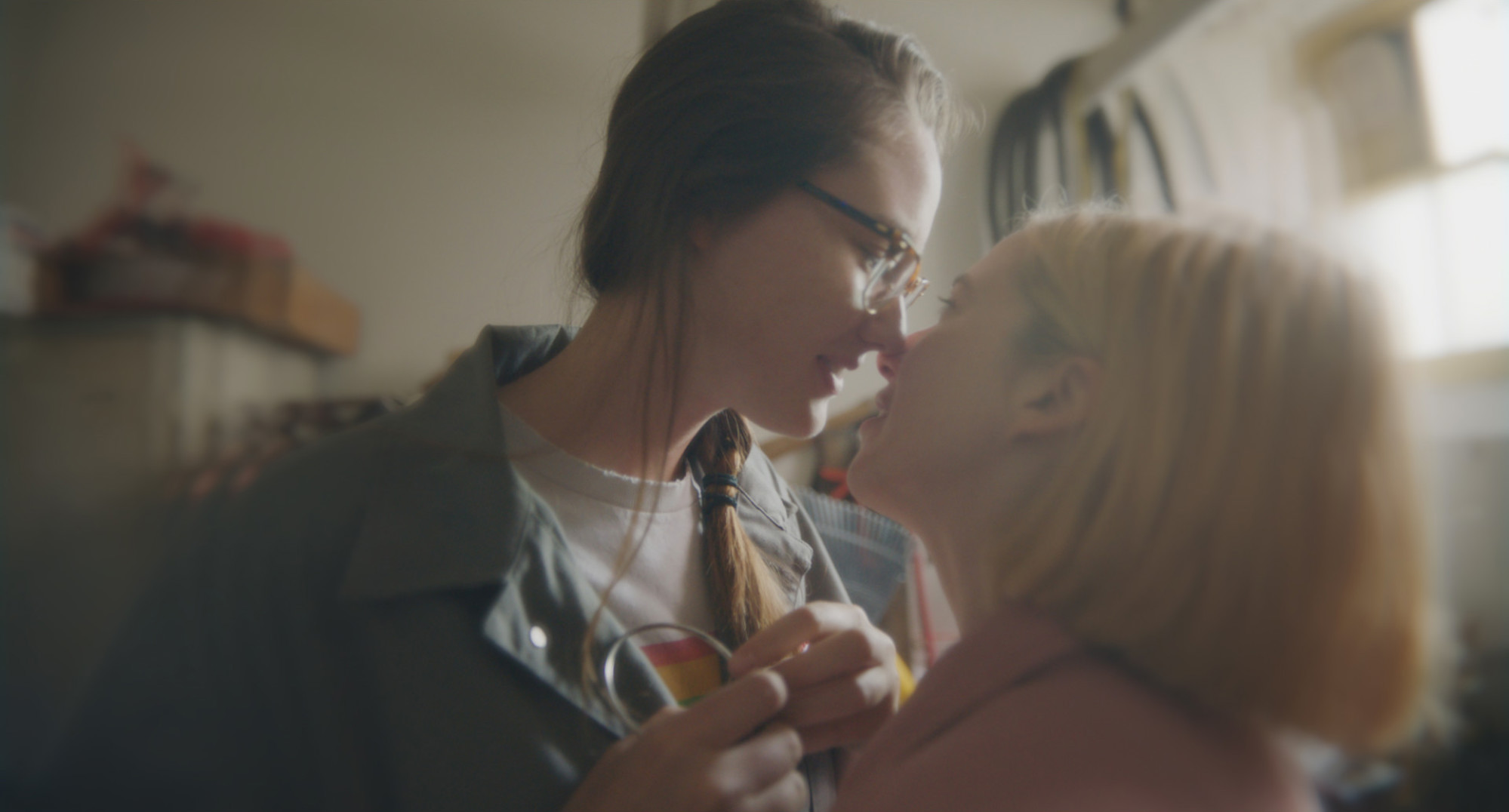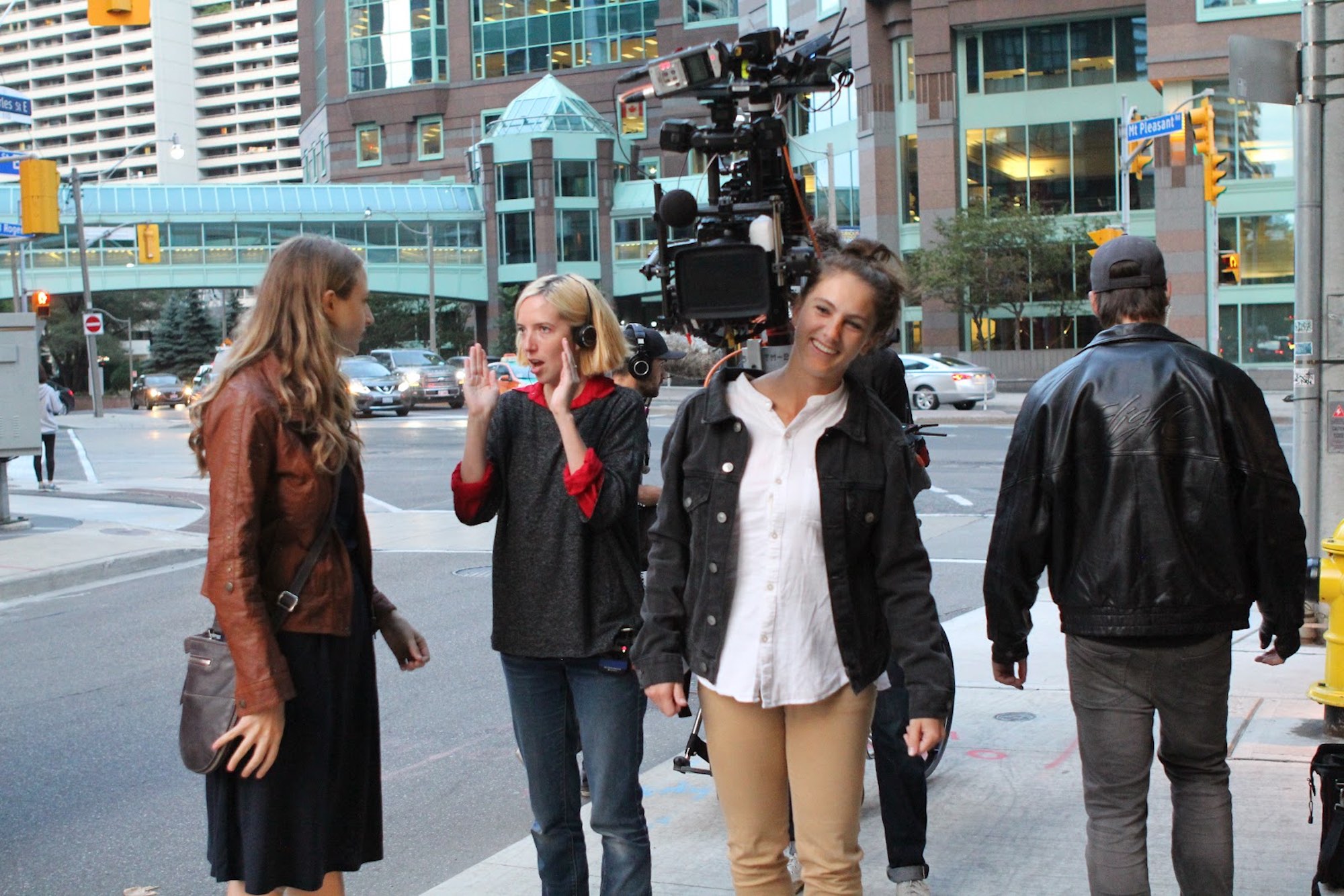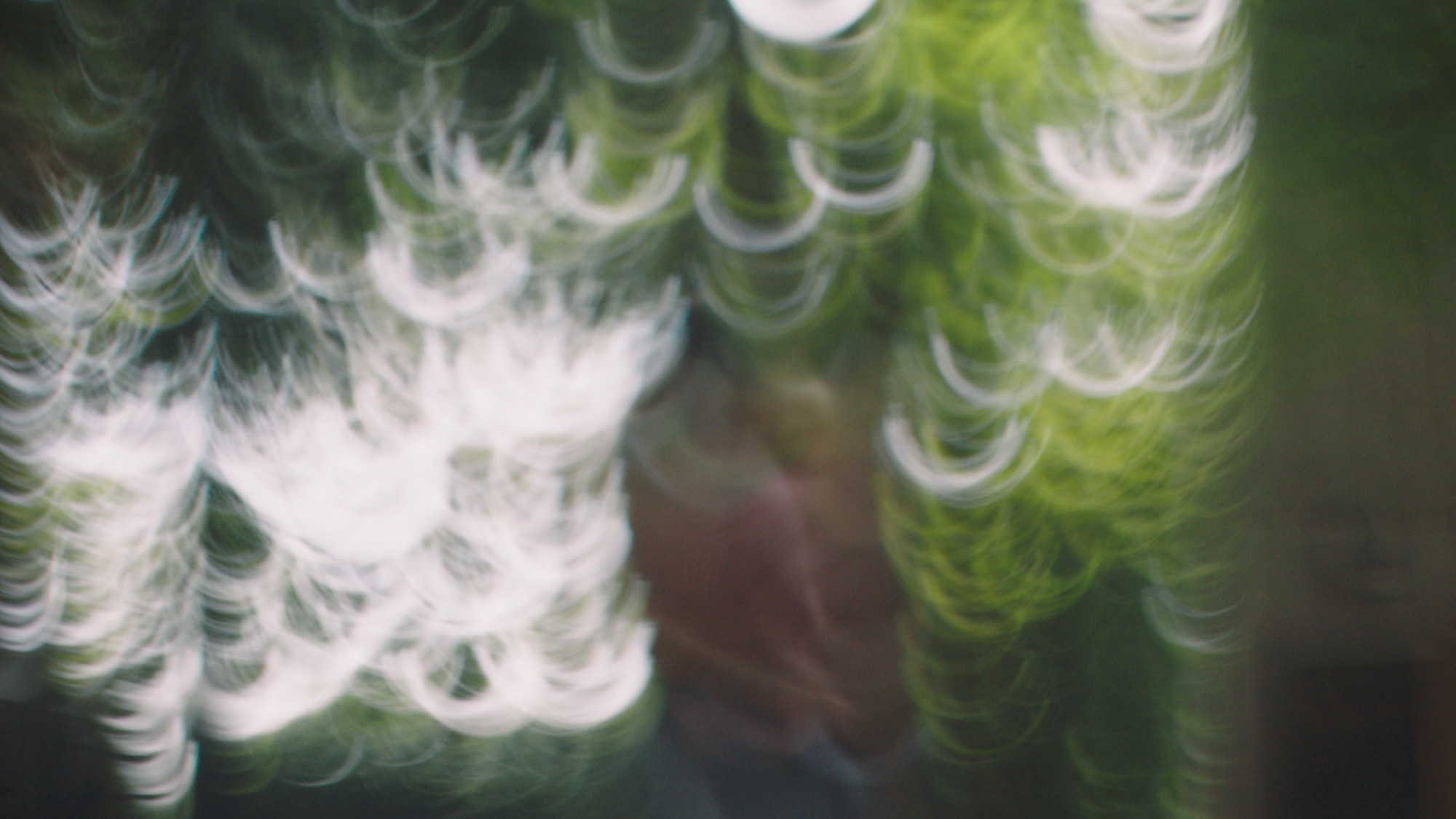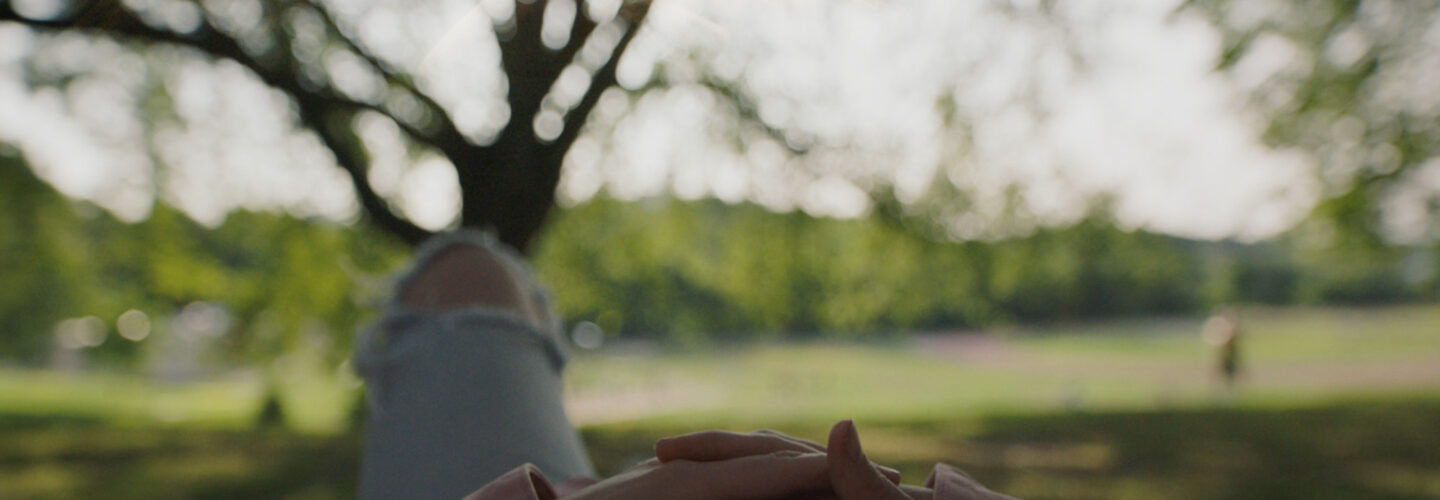
Terminally In Love is an incredibly unique first-person film that captures the nuances of perception and consciousness within a story that feels emotionally real. Co-Directors Justin Black and Emily Jenkins show what it’s like to think, remember, dream and fantasize, within the mindset of a neurotic character who’s reeling from heartbreak. Utilising clever custom technology that required an incredibly methodical preproduction period, Black and Jenkins have created a truly ambitious film that both works as a piece of empathetic art and proof of what you can do on a budget. DN is proud to present the premiere of Terminally In Love today and is delighted to feature a conversation with the filmmakers on how they realised their soaring ambition.
I read that you went through a very thorough pre-production period where you experimented with lens and camera rigs to obtain that impressive POV footage. What you were searching for camera-wise and what did certain equipment allow you to do?
One of the baseline requirements was having first-person footage that was as ‘real’ as possible. This meant our setup needed excellent dynamic range, a wide field of view, shallow depth of field, and a naturalistic perspective, meaning the ‘head’ is in the right place when it tilts down to look at the body. Most POV films either use a helmet mounted DSLR or mirrorless camera which have less-than-optimal dynamic range and colour fidelity, or use a full size shoulder mounted camera that compromises the perspective when looking down at the body. The Alexa Mini was a clear choice for image quality, and the question became how to rig it in the correct perspective.
One of the baseline requirements was having first-person footage that was as ‘real’ as possible.
Early ideas included mounting the camera to a helmet facing down into a 45-degree mirror with the weight externally supported (which posed issues with field of view and reflections), and mounting it front-facing to a helmet with the weight externally supported, which would have resulted in the camera being too far down when looking at the body. Eventually, we realized that mounting a Movi as close as possible to the eyeline by strapping the actor’s head out of the way would give us the pan/tilt range we needed, with a perspective that was very close to accurate, and that the wardrobe could be offset to the side to match the slight camera offset.





To build the rig, we worked with David Dvir, an inventor and owner of 2DHouse, a rental house in Toronto. Dave built a custom bracket that offset the arm of an Easyrig backwards, and hard mounted the Movi to the arm itself. The Movi was built with a partial cage to allow the camera to be closer to the body actor Maccie Paquette’s head. We then controlled the Movi by using its Mimic (motion sensor) unit mounted to a rock climbing helmet with a wireless viewfinder worn by Justin, so he could control the camera by looking around. This allowed for more realistic motion than joysticks both in terms of feathering and speed control, and the subtle roll that accompanies looking left and right in real life.
We tested nearly every available lens, and the only lens available that was wide enough, fast enough and did not flare, which was an issue for night photography with streetlights, was the 14mm Master Prime. For the dreams and memories we used Richard Gale Optics lenses with different aperture inserts to change the shape of the bokeh for a faux anamorphic effect, along with other more extreme shapes to achieve a painterly, impressionistic look when left fully out of focus. We also had 18mm and 25mm Master Primes. For some POV scenes we came off the rig when water or the character lying down prevented the use of the Movi. For these scenes we supported the camera with grip and bungie cables, not the optimal solution, but the one we had. The shower scene also involved relocating the shower faucet for the water to come from the right position.



How did a large camera rig affect the performances yourself and your actors were able to give?
We learned early on that it’s hard for actors to act while looking into a camera. It doesn’t really matter how big the rig is, it’s that when you’re looking into another person’s eyes your face subconsciously reacts to their face, which is missing when looking into a camera. We also wanted our memory scenes to have a feeling of lightness and spontaneity. For these reasons we opted to shoot our memories in third person. Like The Revenant, we’d often be shooting 14mm closeups where the camera is nearly touching the actor’s face. For first-person scenes, the hardest part was synchronising the motion of the head and body. We had co-director Emily narrating the character’s thoughts into a walkie, with DP Justin and Body Actor Maccie Paquette wearing earpieces. This dialogue would serve as a cue so that when, for example, the head was supposed to look down and the hands were supposed to touch the head, these things would happen in sync.
We learned early on that it’s hard for actors to act while looking into a camera.
One of the difficulties was the limited range of the Mimic motion controller. When the character was walking, Justin had to stay physically close to the camera, but if he were to walk as well it would introduce a stepping motion into the camera. To get around this Justin was pushed around in a wheelchair. This ended up drawing more attention on the street than the camera rig itself.



I really loved those abstract colour patterns that occurred prior to dream sequences, did you create those digitally or were they generated in-camera?
Along with a realistic depiction of human vision, we wanted to ‘accurately’ depict the experience of slipping from consciousness into a dream, which inherently allowed a little more room for interpretation. We came across the idea of dream images forming out of the noise in our inner eyelids. To create this noise and abstract colours we used moving lights and different types of glass on sliders and servo motors to cast reflected patterns that were captured by a bare camera sensor. The images that form out of the noise were captured separately and blended in post.
Obviously none of Terminally In Love’s technical achievements would fully work if there wasn’t a good story to back it up. Could you walk us through your scriptwriting process?
We developed the script together for about a year. Much of this time was spent figuring out how to write something that truly felt like it came from the subconscious, both in content and form, as we wanted to create a nuanced, layered and fragmented soundscape rather than the more straightforward narration often heard in film. Emily experimented with alternate script formats and worked with improvised audio recordings as a means of content generation. It was in the process of Emily recording her own stream of consciousness on her iPhone that we decided to cast her as Quinn. This allowed our improvised writing approach to carry into the photography and even into post, as we would often track new thought dialogue directly into the Premiere project as we edited. Though much of the thoughts heard in the film are improvised, for the most part we did adhere to the structure of the script and all of the on screen dialogue in the dream sequences were as written.

How long did the entire creation of the film take from start to finish, and how did you both find managing all the issues that arose because of the ambitious nature of what you set out to achieve?
Overall we were in pre-production for about a year. Prior to shooting the film, we made a proof of concept film that we shot for three days, and put that through post with our actual colourist and sound designer. We did this to test the rig, our ideas for visual and sound aesthetics, and to test how often we could slip in and out of thoughts and daydreams while still having a watchable film. Principal photography took place over seven consecutive days, followed by two days of pickups. Post took almost a year and a half. This was in large part due to how much flexibility our format allowed, most of the dialogue in the film is thought by the main character, which could be re-tracked as we edited, and with the ability to have the character ‘remember’ any memory scene at any point in the film, there was a great deal of flexibility in the edit.
We wanted to create a nuanced, layered and fragmented soundscape.
We also enjoyed a very thorough colour, VFX and sound design process. Colour was handled by colourist Clinton Homuth and assistant James Graham at Alter Ego Post, VFX was headed by Edward Hanrahan at Pixomondo, and sound was supervised by Evan Jerred with sound designer Paul Col, foley recorded at Footsteps Foley and mix at Premium Sound. While the film was a creative challenge, overall it was a very smooth production thanks to our incredibly committed cast, crew, and wonderful post production vendors. Production felt like Summer camp and we look upon the memory fondly. We also could not have completed the film without the support of Toronto Arts Council, Ontario Arts Council, and Canada Council for the Arts or our Executive Producers.
I’m interested to know what the LGBTQ film scene is like in Toronto? Is there much of a community or support for queer filmmaking there?
There’s definitely a strong LGBTQ film scene in Toronto. We had the honour of playing and receiving a Jury Honourable Mention at Inside Out Toronto LGBT Film Festival, which is a CSA and Oscar qualifier and one of the world’s largest LGBT festivals.
And last but not least, what will we be seeing next from the both of you?
I (Justin) work primarily as a DP for film and commercials, and recently completed photography on my first feature film as DP called Running Home, directed by Zoe Hopkins, and produced by Big Soul Productions and Devonshire Productions. Emily is currently the Director of Creative Development at Guru Animation Studio and oversees the creation of scripts, bibles, and animation tests for Guru’s slate of original IP. She directs all of the studio’s live action short form content and recently completed 2×11 minute editorial specials for Netflix called Dance and Sing with True. We’re both also in early development on a feature film together.


